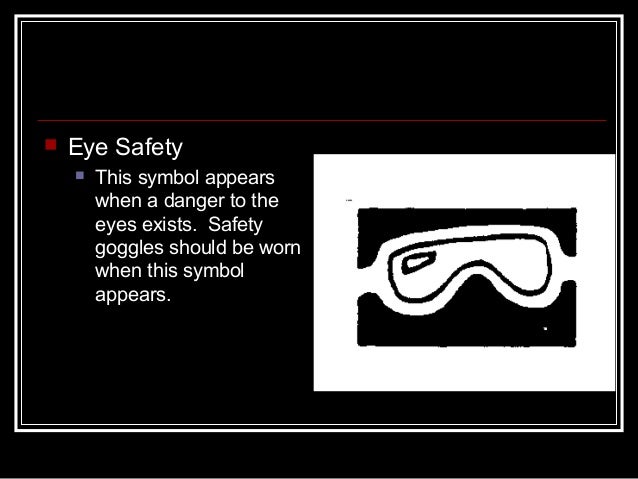If an accident occurs, what should you do immediately?
Inform the teacher
Never handle broken glass with your bare hands! Instead you should...
______ all work surfaces and equipment before leaving the lab.
Clean
Draw the eye protection symbol

Draw the symbol for explosion safety.

When you are working around any chemicals or heating devices, always wear ______
Safety Goggles
When you finish using any electrical equipment, always _____
Turn it off
Listen carefully and follow the teacher's ______
Directions
Draw clothing protection symbol
Make a qualitative and quantitative observation about the game board.
Qualitative - made using the five senses
Quantitative - made using numbers
After an experiment what should you do with the leftover materials (beakers, chemical waster, thermometer,etc)?
Dispose according to the teacher's directions
How many variables should be tested during an investigation?
One independent and all others should be controlled
True or false. Horseplaying, practical jokes, and pranks are dangerous and prohibited during labs.
True
Identify this symbol, and explain when it would appear.
Disposal Alert. This symbol appears when care must be taken to dispose of materials properly.
Identify the following safety symbol and where you would see it.
Biological Hazard. This symbol appears when there is danger involving bacteria, fungi, or protists.
List two clothing items that are not allowed during a lab investigation
Open-toed shoes, baggy clothing, long jewelry
What should you do if there is an unknown object or liquid in the lab?
Long hair must be
Tied back
Identify this symbol, explain when it would appear.
Open Flame Alert. This symbol appears when use of an open flame could cause a fire or an explosion.
What is the difference between an observation and inference. Give examples.
An observation is something you have seen, heard or noticed. An inference is a conclusion you make based on evidence.
Before handling animals in the classroom, what should you do?
What is the correct way to check the odor of a substance? Be prepared to demonstrate.
Wave/Waft the fumes toward your nose
Unused chemicals should never be put back into their original containers, instead they should be...
disposed according to the teachers directions
Draw the fume safety symbol

Describe the relationship between the independent variable and the dependent variable.
The independent variable is what you are testing (there is only ONE) and the dependent variable will change according to the IV. The dependent variable is what you measure.